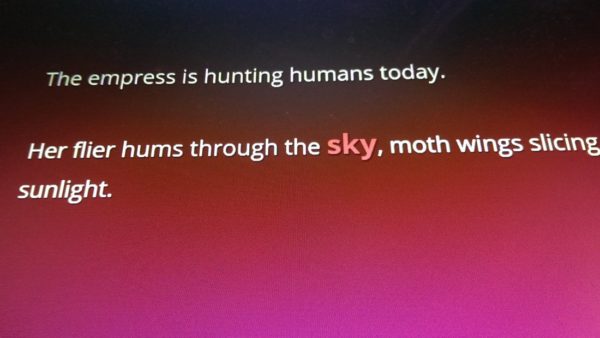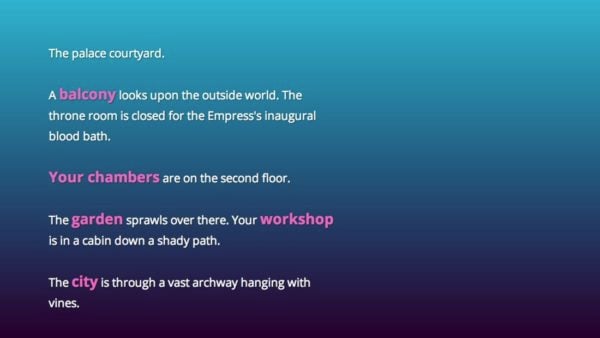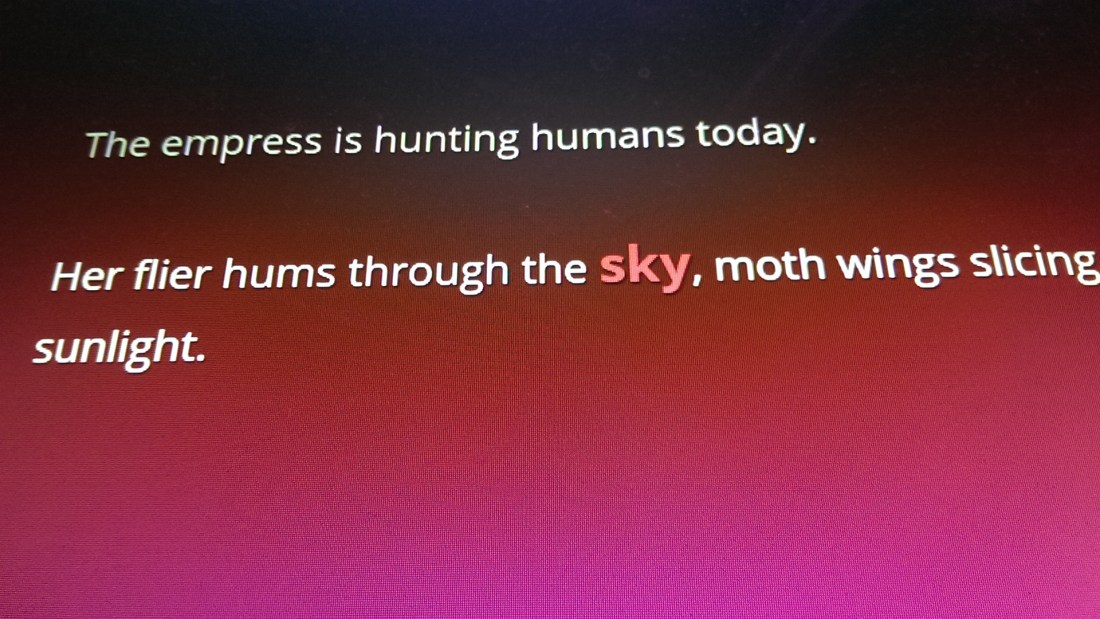
Last spring at the Whitney Biennial — an exhibition of contemporary art at the Whitney Museum of American Art in New York City — I played through author and multimedia artist Porpentine’s “With Those We Love Alive,” a web-based interactive fiction. I’d first encountered the work three years prior, very close to its initial release, on a dying desktop computer in my teenage bedroom. Despite its ascendency in the art world, I still find “With Those We Love Alive” to be a humble, strange and urgent work. It suggests possibilities for storytelling that amaze me. That the technology backing these innovations has stayed true to its roots amazes me even more.
Twine, the tech-turned-medium behind “With Those We Love Alive,” was originally designed to build choose your own adventure stories. The medium’s mechanical skeleton: Read some text, click a link, then read the new text your action has generated. After that, the possibilities for function and form move beyond easy categorization. Twine is still new enough that each object, also called a “twine,” seems to generate its own. I’ve seen non-linear narratives, interactive poems, therapeutic tools and text-based games, but if I told you about a future where writing is literally coding, you wouldn’t expect it to look like this.
It’s the last option, twines-as-games, that has garnered the most attention. The community surrounding Twine consists of queer, marginalized creators dispersing their work mostly through Tumblr posts and word of mouth — so, the antithesis of GamerGate. The tool is free, easily learned and almost comically DIY next to something like Grand Theft Auto 5, making it an endearingly grassroots corrective to a calcified gaming industry.
But I’ve always considered twines first and foremost as narratives, as part of the literary tradition. After all, their unit of meaning is the written word. Not for nothing does Porpentine say that Twine is “the closest we’ve come to a blank page,” the book that “can bind itself along an infinite number of spines.”
The difference is between considering Twine, a stripped-down substitute for already established game development processes, as technologically inept and considering it as an emerging technology in the history of narrative, one that is developing in the hands of the marginalized and dispossessed.

“With Those We Love Alive” puts this new technology to the task of communicating a specific kind of alienation, a loneliness that leaks from the language out into the world and temporality it crafts. “With Those We Love Alive” is about the living in a society honed to knifepoint by custom and ritual. It’s about the hushed marks of difference (here, trauma and transness) that separate one from social organism. And it’s about finding a way out. It’s about showing us a way out.
We follow the story’s protagonist, an artisan serving an all-powerful empress, as she lives out her days in a strange and disconnected land. Here, angel corpses rot near the docks, and the royal hounds gnaw at heretics’ bones. Porpentine’s prose is at once purposeful and tantalizingly opaque. It offers up only surfaces, a glimpse into this world’s unnatural machinery as filtered through the protagonist, perpetual observer, who knows these rules but no longer wants to play.
Isolation and longing are conveyed through not just the language’s tone, but the way that Twine is uniquely able to structure words. Twine allows for many innovations in “With Those We Love Alive,” but I’ll focus on just one: the unfolding of the text spatially as well as temporally. The twine is essentially a progression of days, each of which opens with the same chunk of text, mapping out a world that you’re free to explore or ignore. The throne room is a click away from the palace courtyard, and the city branches into the temple and the dream distillery.
The narrative does not herd you from place to place as it does in a printed text. You choose where to move, and your ability to choose opens up the world — being somewhere makes you realize that an elsewhere is also possible. Indeed, making the “wrong” choice means it’s all too easy to miss things like the festival that occurs in the temple around halfway through the game. It’s as if the world of the narrative also exists separately from our experience of it. We don’t move through space as authoritatively here, and we’re more conscious of where we might stand in relation to the whole.
The result is a world that envelops us readers just as it envelops the protagonist, a world that we float through and that shifts and grows without us. True, this place barely changes — caught in a cycle of days, the protagonist sees the same portrait in the throne room and the same happenings along the docks. But that makes finding real change all the more magical. Out of monotony, a small burst of beauty.
There are many other things “With Those We Love Alive” does that I haven’t talked about here, like how it sometimes asks players to draw on themselves with pen — a very important mechanic. Yet I feel this discussion of spatiality gets at both what this twine is concerned with and what the technology of Twine is being used for. The salve for a society incompatible with the expression of private pain, for an existence that feels detached from the rest of the world, is community-building. It would be egregious to say that we come closer to understanding living with trauma through this mimesis of its possible effect. But perhaps those of us with similar experiences can find in this work, this medium, a thread to tie us together.
You can play “With Those We Love Alive” here.
Contact Ashley Huang at ashhuang “at” stanford.edu.

